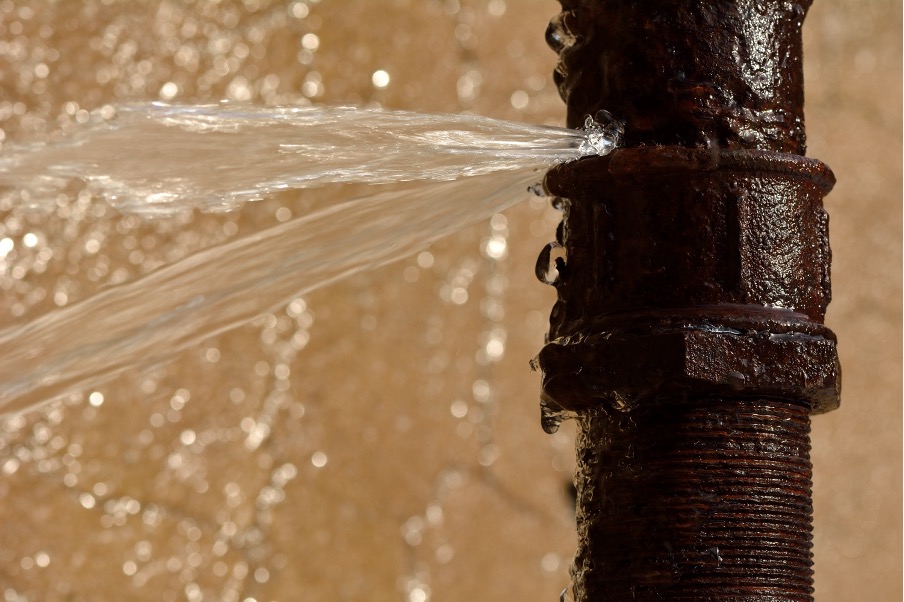How to Inspect If Your Home Has a Covert Leak
How to Inspect If Your Home Has a Covert Leak
Blog Article
We have discovered the article pertaining to Leaking water lines below on the web and thought it made sense to relate it with you here.

Early detection of dripping water lines can minimize a potential catastrophe. Some small water leakages might not be noticeable.
1. Examine the Water Meter
Inspecting it is a surefire way that assists you uncover leaks. If it moves, that indicates a fast-moving leak. This suggests you may have a sluggish leakage that can even be below ground.
2. Examine Water Intake
If you detect unexpected adjustments, in spite of your usage being the very same, it means that you have leakages in your plumbing system. An unexpected spike in your costs suggests a fast-moving leakage.
On the other hand, a steady boost on a monthly basis, even with the same behaviors, shows you have a slow-moving leak that's also slowly intensifying. Call a plumber to completely check your building, specifically if you really feel a warm location on your flooring with piping underneath.
3. Do a Food Coloring Test
30% comes from toilets when it comes to water consumption. Examination to see if they are running effectively. Drop flecks of food shade in the tank and also wait 10 minutes. There's a leak between the storage tank and dish if the color in some way infiltrates your dish throughout that time without flushing.
4. Asses Exterior Lines
Do not neglect to inspect your outdoor water lines as well. Examination spigots by connecting a yard pipe. Must water permeate out of the connection, you have a loose rubber gasket. Replace this as well as make certain all connections are limited. It will aid obtain it properly checked out and also maintained annually if you have actually got a lawn sprinkler system. One small leakage can throw away tons of water as well as surge your water expense.
5. Evaluate and Assess the Circumstance
Home owners ought to make it a habit to examine under the sink counters and also even inside closets for any bad odor or mold and mildew growth. These two warnings suggest a leakage so timely interest is needed. Doing regular assessments, also bi-annually, can conserve you from a significant trouble.
If you know your house is currently old, keep a watchful eye on your heating systems, tubes, pipes etc. Check for discolorations and weakening as a lot of devices and also pipes have a life span. They will certainly additionally naturally deteriorate due to damage. If you believe dripping water lines in your plumbing system, do not wait for it to rise. Call a professional plumber immediately so you don't end up with a terrible mess in your home.
Early discovery of dripping water lines can minimize a prospective calamity. Some small water leakages might not be noticeable. Examining it is a guaranteed way that helps you uncover leaks. One tiny leakage can waste heaps of water and surge your water bill.
If you presume leaking water lines in your plumbing system, don't wait for it to rise.
WARNING SIGNS OF WATER LEAKAGE BEHIND THE WALL
PERSISTENT MUSTY ODORS
As water slowly drips from a leaky pipe inside the wall, flooring and sheetrock stay damp and develop an odor similar to wet cardboard. It generates a musty smell that can help you find hidden leaks.
MOLD IN UNUSUAL AREAS
Mold usually grows in wet areas like kitchens, baths and laundry rooms. If you spot the stuff on walls or baseboards in other rooms of the house, it’s a good indicator of undetected water leaks.
STAINS THAT GROW
When mold thrives around a leaky pipe, it sometimes takes hold on the inside surface of the affected wall. A growing stain on otherwise clean sheetrock is often your sign of a hidden plumbing problem.
PEELING OR BUBBLING WALLPAPER / PAINT
This clue is easy to miss in rooms that don’t get much use. When you see wallpaper separating along seams or paint bubbling or flaking off the wall, blame sheetrock that stays wet because of an undetected leak.
BUCKLED CEILINGS AND STAINED FLOORS
If ceilings or floors in bathrooms, kitchens or laundry areas develop structural problems, don’t rule out constant damp inside the walls. Wet sheetrock can affect adjacent framing, flooring and ceilings.
https://www.servicemasterbyzaba.com/blog/how-to-detect-water-leakage-in-walls/

As a keen person who reads on Hacks to detect leaks, I assumed sharing that blog post was worthwhile. Loved our blog posting? Please share it. Help somebody else locate it. Bless you for your time. Visit again soon.
Report this page